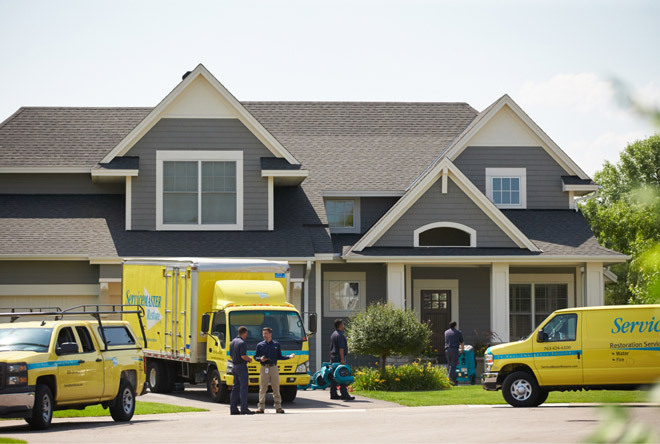Alaska Mold Remediation Services
Professional Mold Removal in Alaska
Living or working around mold can have serious repercussions for your health. Homeowners who have mold in their homes have been known to experience allergic reactions, asthma, and other respiratory issues. Just how hazardous the effects of mold may be is yet to be determined by medical professionals.
If the drying of wet building materials in your home is commenced within 24 hours (assuming clean water), the chances of preventing mold growth are excellent. If building materials remain wet, it is inevitable that mold will start to grow. Therefore, addressing and eliminating moisture problems is the critical first step. Simply put, “Got Moisture? Got Mold!”
However, once mold is present, drying is not enough. Moldy materials must be either removed or decontaminated. Proper remediation procedures will be determined by the size, scope and nature of the mold contamination. ServiceMaster of Alaska is an industry leader in professional mold damage remediation and stands ready to serve you
Top 10 Essential Facts About Mold in Alaska
- Potential health effects and symptoms associated with mold exposure include allergic reactions, asthma, and other respiratory issues.
- There is no practical way to eliminate all mold and mold spores in an indoor environment; the way to control indoor mold growth is to control moisture.
- Molds can be found almost anywhere; they can grow on virtually any substance providing moisture is present. There are molds that can grow on wood, paper, carpet, and food.
- Mold can be cleaned off hard surfaces with water and detergent, and prevented from appearing again by drying these surfaces completely. If absorbent materials such as ceiling tiles become moldy, they may need to be replaced.
- Mold growth can be decreased by reducing indoor humidity (to 30-60%):
- Vent bathrooms, dryers, and other moisture-generating sources to the outside.
- Use air conditioners and de-humidifiers.
- Use exhaust fans whenever cooking, dishwashing, and cleaning.
- Condensation on cold surfaces such as windows, piping, exterior walls, the roof, and floors can be prevented by adding insulation to your home.
- You do not want to install carpet in areas where there is a perpetual moisture problem, such as by a drinking fountain, classroom sink, or on a concrete floor with leaks or frequent condensation.
- Mold growth can be prevented by cleaning and drying any damp or wet building materials and furnishings within 24-48 hours.


